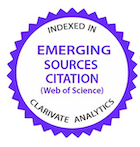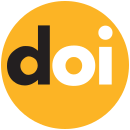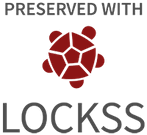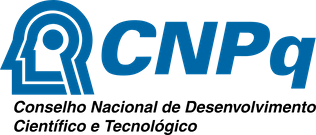Comparação entre o tonômetro de rebote (TD - 8000 portable) e aplanação (Tono-Pen Avia™) manuseados por diferentes avaliadores para mensurações da pressão intraocular em coelhos
DOI:
https://doi.org/10.1590/1809-6891v23e-73055EResumo
Este estudo teve como objetivo comparar os valores da pressão intraocular (PIO) por diferentes tonômetros e avaliadores (veterinário oftalmologista especialista e veterinário não especialista). Para isso, foram utilizados 30 coelhos, em todos (n = 60 olhos), a PIO foi medida inicialmente com um tonômetro de rebote (model TD - 8000 portable, Apramed Indústria e Comércio de Equipamentos Médicos Ltda) e, posteriormente, com um tonômetro de aplanação (portable model Tono-Pen Avia™®, Reichert Technologies®, USA). Com os dois aparelhos, as medidas em mmHg foram realizadas na região central das córneas, sempre no mesmo período, por um profissional oftalmologista veterinário (especialista) e um profissional veterinário (não especialista). Os dados foram comparados estatisticamente por meio do teste de análise de variância simples. Com o tonômetro de rebote, a PIO variou de 7 a 14 mmHg quando medida por ambos os avaliadores; enquanto com o tonômetro de aplanação, de 9 a 15 mmHg pelo especilista e de 8 a 16 mmHg pelo não especialista. Nos olhos direitos, a PIO medida pelo tonômetro de aplanação pelo avaliador não experiente foi estatisticamente inferior aos valores do especialista; ainda, os resultados dos dois avaliadores foram maiores nestes mesmos olhos quando comparados com os do tonômetro de rebote. Nos olhos esquerdos, a PIO medida pelo tonômetro de aplanação pelo avaliador não experiente foi estatisticamente superior aos valores do especialista com o tonômetro de rebote. Assim, foi possível inferir que, independente da experiência na área, o tonômetro de aplanação indicou maiores valores médios de PIO em ambos os olhos e, em relação aos avaliadores, as médias das medidas realizadas pelos especialistas foram maiores em relação ao não especialista.
Palavras-chave: humor aquoso; glaucoma; oftalmologia veterinária; tonometria; uveíte
Downloads
Referências
Broadwater JJ, Schorling J, Herring IP, Elvinger F. Effect of body position on intraocular pressure in dogs without glaucoma. American Journal of Veterinary Research. 2008;69(1):527-530. Available in: https://doi.org/10.2460/ajvr.69.4.527.
Ghaffari MS, Shojaei M, Sabzevari A, Khoramid N. Reference values for intraocular pressure and Schirmer tear test in clinically normal Sanjabi sheep. Small Ruminant Research. 2011;97(1):101-103. Available in: https://doi.org/ 10.1016/j.smallrumres.2010.12.008.
Featherstone HJ, Heinrich CL. Ophthalmic examination and diagnostics. In: Gelatt KN, Gilger BC, KERN TJ. Veterinary Ophthalmology. 5th ed. Oxford: John Wiley & Sons; 2013. p. 533-702.
Gum GG, Mackay EO. Physiology of the eye. In: Gelatt KN, Gilger BC, Kern TJ. Veterinary Ophthalmology. 5th ed. Oxford: John Wiley & Sons; 2013. p. 171-207.
Johnson TV, Fan S, Toris CB. Rebound tonometry in conscious, conditioned mice avoids the acute and profound effects of anesthesia on intraocular pressure. Journal of Ocular Pharmacology and Therapeutics. 2008;24(2):175-185. Available in: https://doi.org/10.1089/jop.2007.0114.
Gelatt KN, Peiffer Junior RLP, Gum GG, Gwin RM, Erickson JL. Evaluation of applanation tonometers for the dog eye. Investigative Ophthalmology & Visual Science. 1977;16(10):963-968. Available in: https://pubmed.ncbi.nlm.nih.gov/908649/.
Zhong L, Desai LS. Comparison of intraocular pressure measurements between Tonopen Vet and TonoVet in dutch belted rabbits. Investigative Ophthalmology & Visual Science. 2009;50(1):2856.
Prashar A, Guggenheim JA, Erichsen JT, Hocking PM, Morgan JE. Mearusement of intraocular pressure (IOP) in chickens using a rebound tonometer: quantitative evaluation of variance due to position inaccuracies. Experimental Eye Research. 2007;85(4):563-571. Available in: https://doi.org/10.1016/j.exer.2007.07.010.
Kontiola AI, Goldblum D, Mittag T, Danias J. The induction/impact tonometer: a new instrument to measure intraocular pressure in the rat. Experimental Eye Research. 2001;73(6):781-785. Available in: https://doi.org/ 10.1006/EXER.2001.1088 .
Cervino A. Rebound tonometry: new opportunities and limitations of non invasive determination of intraocular pressure. British Journal of Ophthalmology. 2006;90 (12):1444-1446. Available in: https://doi.org/10.1136/bjo.2006.102970.
Tofflemire KL, Wang C, Jens JK, Ellinwood NM, Whitley RD, Ben-Shlomo G. Evaluation of three hand-held tonometers in normal canine eyes. The Veterinary Journal. 2017;224 (1):7-10. Available in: https://doi.org/10.1016/j.tvjl.2017.04.003.
Pereira FQ, Bercht BS, Soares MG, Mota MGB, Pigatto JAT. Comparison of a rebound and an applanation tonometer for measuring intraocular pressure in normal rabbits. Veterinary Ophthalmology. 2011;14(5):321-326. Available in: https://doi.org/ 10.1111/j.1463-5224.2011.00879.
Andrade SF, Palozzi RJ, Giuffrida R, Campos RJ, Santos GC, Fukui RM. Comparison of intraocular pressure measurements between the Tono-Pen XL® and Perkins® applanation tonometers in dogs and cats. Veterinary Ophthalmology. 2012;15(1): 14-20. Available in: https://doi.org/10.1111/j.1463-5224.2011.00926.x.
Oliveira JK, Montiani-Ferreira F, Williams DL. The influence of the tonometer position on canine intraocular pressure measurements using the Tonovet rebound tonometer. Open Veterinary Journal. 2018;8(1):68-76. Available in: https://doi.org/10.4314/ovj.v8i1.12.
Ofri R. Intraocular pressure and glaucoma. Veterinary Clinics: Exotic Animal Pratice. 2002;5(2):391-406. Available in: https://doi.org/10.1016/S1094-9194(01)00004-4.
Gonçalves GF, Pippi NL, Pachaly JR. Pressão intraocular em cães com catarata. Arquivos de Ciências Veterinárias e Zoologia da UNIPAR. 2005;8(1):57-61. Available in: https://revistas.unipar.br/index.php/veterinaria/article/view/68.
Oriá AP, Gomes Júnior DC, Souza MR, Costa Neto JM, Estrela-Lima A, Dórea Neto FA. Glaucoma secundário em cães e gatos. Medicina Veterinária. 2013;7(3):13-22. Available in: http://www.journals.ufrpe.br/index.php/medicinaveterinaria/article/view/588/467.
Samuelson DA. Ophthalmic Anatomy. In: Gelatt KN, Gilger BC, Kern TJ. Veterinary Ophthalmology. 5th ed. Oxford: John Wiley & Sons; 2013. p. 39-170.
Lim KS, Wickremasinghe SS, Cordeiro MF, Bunce C, Khaw PT. Accuracy of intraocular pressure measurements in new zealand white rabbits. Investigative Ophthalmology & Visual Science. 2005;46 (7):2419-2423. Available in: https://doi.org/10.1167/iovs.04-061.
Workman P, Aboagye, EO, Balkwill F, Balmain A, Bruder G et al. Guidelines for the welfare and use of animals in cancer research. British Journal of Cancer. 2010;102(1):1555-1577. Available in: https://doi.org/10.1038/sj.bjc.6605642.
Kern TJ. Rabbit and rodent ophthalmology. Seminars in Avian and Exotic Pet Medicine. 1997;6(3):138-145. Available in: https://doi.org/10.1016/s1055-937x(97)80021-7.
Ma D, Chen CB, Liang J, Lu Z, Chem H, Zhang M. Repeatability, reproducibility and agreement of intraocular pressure measurement in rabbits by the TonoVet and Tono-Pen. Scientific Reports. 2016;6(35187):1-7. Available in: https://doi.org/10.1038/srep35187.
Welihozkiy A, Bedenice D, Price LL, Pizzirani S, Pirie CG. Mensurement of corneal sensitivity in 20 ophthalmologically normal alpacas. Veterinary Ophthalmology. 2011;14(5):333-336. Available in: https://doi.org/10.1111/j.1463-5224.2011.00895.x.
Pigatto JAT, Pereira JQ, Alburquerque L, Corrêa LFD, Bercht BS, Hünning OS, Silva AAR, Freitas JVRP. Intraocular pressure meansurement in sheep using an applanation tonometer. Revista Ceres. 2011;58(6):685-689. Available in: https://doi.org/ 10.1590/S0034-737X2011000600002.
Martín-Suárez E, Molleda C, Tardón R, Galán A, Gallardo J, Molleda J. Diurnal variations of central corneal thickness and intraocular pressure in dogs from 8:00 am to 8:00 pm. The Canadian Veterinary Journal. 2014;5 (4):361-365. Available in: https://www.ncbi.nlm.nih.gov/pmc/articles/PMC3953936/.
González-Méijome JM, Jorge J, Queirós A, Fernandes P, Montés-Micó R, Almeida JB, Parafita MA. Age differences in central and peripheral intraocular pressure using a rebound tonometer. British Journal of Ophthalmology. 2006(12):1495-1500. Available in: https://doi.org/10.1136/bjo.2006.103044.
Queirós A, González-Méijome JM, Fernandes P, Jorge J, Montés-Micó R, Almeida JB, Parafita MA. Technical note: a comparison of central and peripheral intraocular pressure using rebound tonometry. Ophthalmic and Physiological Optics. 2007;(5): 506-511. Available in: https://doi.org/10.1111/j.1475-1313.2007.00508.x.
Yamashita T, Miki A, Leki Y, Kirvu J, Yaoeda K, Shirakashi M. Central and peripheral intraocular pressure measured by a rebound tonometer. Clinical Ophthalmology. 2011;5(1):1113-1118. Available in: https://doi.org/10.2147/OPTH.S23143.
Muttuvelu DV, Baggesen K, Ehlers N. Precision and accuracy of the ICare tonometer - Peripheral and central IOP measurements by rebound tonometry. Acta Ophthalmology. 2012;90(4):322-326. Available in: https://doi.org/10.1111/j.1755-3768.2010.01987.x.
Beasley IG, Laughton DS, Coldrick BJ, Drew TE, Sallah M, Davies LN. Does rebound tonometry probe misalignment modify intraocular pressure measurements in human eyes? American Journal of Ophthalmology. 2013;1-6. Available in: https://doi.org/10.1155/2013/791084.
Zhang H, Yang D, Ross CM, Wigg JP, Pandav S, Crowston JG. Validation of rebound tonometry for intraocular pressure measurement in the rabbit. Experimental Eye Research. 2014;121(1):89. Available in: https://doi.org/10.1016/j.exer.2014.02.004.
Grandin T. Assesment of stress during handling and transport. Journal of Animal Science. 1997;75(1):249-257. Available in: https://doi.org/10.2527/1997.751249x.
Wang, X.; Dong, J.; Wu, Q. Twenty-four-hour measurement of IOP in rabbits using rebound tonometer. Veterinary Ophthalmology. 2013;16(6):423,425. Available in: https://doi.org/10.1111/vop.12020.
Fernandes P, Díaz-Reis JA, Queiros A, Gonzales-Meijome JM, Jorge J. Comparasion of the ICare rebound tonometer with the Goldmann tonometer in a normal population. Ophthalmic and Physiological Optics. 2005;25(5):436-440. Available in: https://onlinelibrary.wiley.com/doi/10.1111/j.1475-1313.2005.00327.x
Kniestedt C, Lin S, Choe J, Nee M, Bostrom A, Sturmer J, Stamper RL. Correlation between intraocular pressure, central corneal thickness, stage of glaucoma, and demographic patient data: prospective analysis of biophysical parameters in tertiary glaucoma practice populations. Journal of Glaucoma. 2006;15(1):91-97. Available in: https://doi.org/10.1097/00061198-200604000-00003.
Martinez-De-La-Casa JM, Garcia-Feijoo J, Vico E, Fernandez-Vidal A, Del Castillo JMB, Wasfi M, Garcia-Sanchez, J. Effect of corneal thickness on dynamic contour, rebound, and Goldmann tonometry. Ophthalmology. 2006;113(12):2156-2162. Available in: https://doi.org/10.1016/j.ophtha.2006.06.016.
Ofri R, Horowitz IH, Levison M, Kass PH. Intraocular pressure and tear production in captive eland and fallow deer. Journal of Wildlife Diseases. 2001;37(2):387-390. Available in: https://doi.org/10.7589/0090-3558-37.2.387.
Tofflemire KL, Whitley EM, Gould AS, Dewell RD, Allbaugh RA, Ben-Shlomo G, O'Connor AM, Whitley RD. Schirmer tear test I and rebound tonometry findings in healthy calves. Veterinary Ophthalmology. 2015;18(2):147-151. Available in: https://doi.org/10.1111/vop.12165.
Liu G, Zeng T, Yu W, Yan N, Wang H, Cai SP, Pang LH, Liu H. Characterization of intraocular pressure responses of the Tibetan monkey (Macaca thibetana). Molecular Vision. 2011;17(1):1405-1413. Available in: https://pubmed.ncbi.nlm.nih.gov/21654897/.
Vareilles P, Conquet P, Le Douarec JC. A method for the routine intraocular pressure (IOP) measurement in the rabbit: range of IOP variations in this species. Experimental Eye Research. 1977;24(1):369-375. Available in: https://doi.org/10.1111/vop.1216510.1016/0014-4835(77)90149-X.
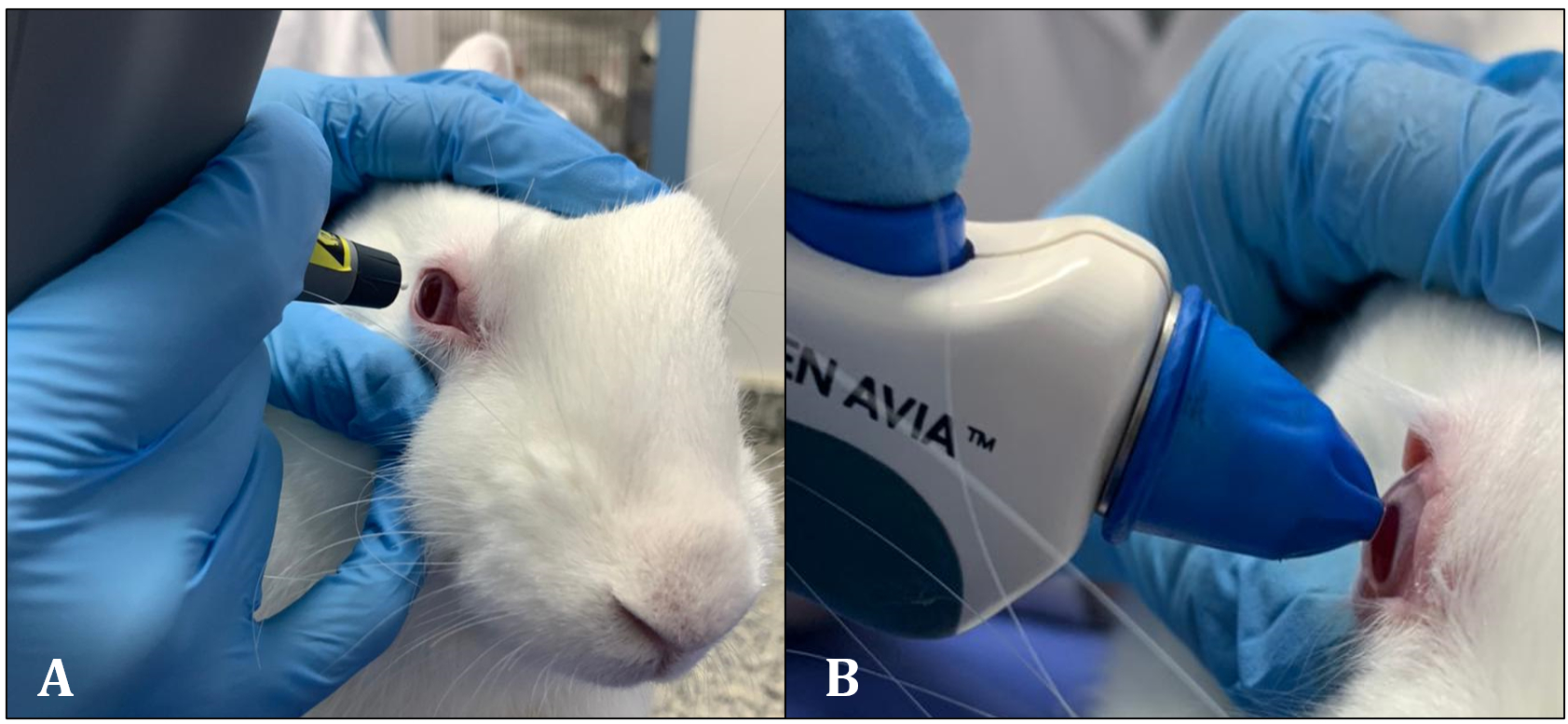
Downloads
Publicado
Como Citar
Edição
Seção
Licença
Copyright (c) 2022 Ciência Animal Brasileira / Brazilian Animal Science

Este trabalho está licenciado sob uma licença Creative Commons Attribution 4.0 International License.
Autores que publicam nesta revista concordam com os seguintes termos:
- Autores mantém os direitos autorais e concedem à revista o direito de primeira publicação, com o trabalho simultaneamente licenciado sob a Licença Creative Commons Attribution que permite o compartilhamento do trabalho com reconhecimento da autoria e publicação inicial nesta revista.
- Autores têm autorização para assumir contratos adicionais separadamente, para distribuição não-exclusiva da versão do trabalho publicada nesta revista (ex.: publicar em repositório institucional ou como capítulo de livro), com reconhecimento de autoria e publicação inicial nesta revista.
- Autores têm permissão e são estimulados a publicar e distribuir seu trabalho online (ex.: em repositórios institucionais ou na sua página pessoal) a qualquer ponto antes ou durante o processo editorial, já que isso pode gerar alterações produtivas, bem como aumentar o impacto e a citação do trabalho publicado (Veja O Efeito do Acesso Livre).





